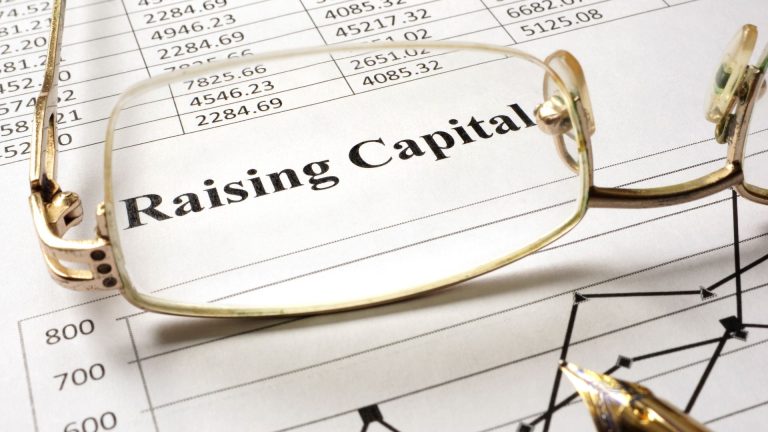Do you use human psychology to your benefit in your venture investing?
Considering well what makes people tick will make a money difference for your Venture investment success. For example, start with a very important question that focuses on the people involved:
Do Founders and VCs work toward a common objective?
The answer may seem obvious: ‘Of course, they do. They both want maximum value for the startup.’ When answered this way, the Founder and VC do have a common objective. Both want to get the most value possible from that business enterprise. They may differ some on how best to get there. They may differ on the best timing and means for an exit strategy. But they want maximum value.
It misses an extremely important point, though, if “value” translates only to financial return from an exit “value”. The importance of this makes a crucial difference in how much financial value the VC gets from their investment.
If as a VC you want the most money from your investment, consider carefully the full “value” your founders look to get from their startup. Doing that will bring you the possibility of some superhuman efforts from your founders.
Let’s look at that in several parts. We’ll start with psychology and make our way to the numbers. First, a well-known Charlie Munger ‘wise saying’:
“Show me the incentive, I’ll show you the outcome.” – Charlie Munger, Vice Chairman, Berkshire Hathaway.
Can incentives really be that powerful? Are they an outcomes crystal ball?
Don’t so many other things matter, like the quality of the business value proposition, the state of the market and the company’s standing within it, the experience of the team, etc., etc. Those, and certainly many others, matter greatly and are included in a comprehensive view.
The overarching importance of incentives, though, must be respected.
- Unmotivated, gifted leaders don’t lead much differently than poor leaders.
- Employees without incentives won’t be there to help a company meet market challenges that will come along.
- Article – Do you use human psychology to your benefit in your Venture investing
- Non-incentivized team members will not get that excellent value proposition across to their prospects.
- People in the effort won’t do their best, and the company simply won’t succeed.
Conversely,
- Motivated followers make a poor leader look good with their outstanding effort.
- Employees with incentives find time to shine amidst challenges that show them off.
- Team members rewarded for successful work will ooze value proposition all over. They will show any customer why he or she would want to be served by this company.
- People on this team, with clear incentives, will create success for themselves and their company, as long as those rewards are well-aligned with business objectives.
That all sounds rather basic, but there’s a reason Munger’s ‘grouchy, genius’ investing mind pointed it out. So many in business just don’t make a point of shaping and sharing incentives that move and motivate the people who make any company what it is.
If you think incentives are mostly limited to sales commissions, and performance-based bonuses, and even equity stock options, then you’re missing a big part of people being human beings while they’re being employees and company leaders.
Why does some Venture Capital money always follow market excesses whether it’s Tech in the Dot.Com Bubble, Crypto in 2021, or even AI only for AI’s sake here in 2023? When VCs see a runaway trend and don’t know which horses to back in the race, they tend to race each other throwing money at it.
VCs are people, too, of course. They have FOMO, they don’t want to be left behind. Some of them, also, wouldn’t know what to say to their investors about why they missed the obvious trend that any idiot could have followed. That’s FOHO – Fear of Humiliation by Others!
As people who are comfortable taking a fair amount of risk, VCs also bring a competitive spirit to the endeavor. They want to be the VC who ….
- Had the greatest insight,
- Saw the market most clearly,
- Assembled the best Deal Flow,
- Assessed the startup teams most true to their nature,
- Timed the deployment most astutely,
and many other superlatives that most VCs would feel really good to hear said of themselves.
It’s important to realize that these value characteristics of people aren’t just minor additions to the basically rational calculation of making money. Some of these values, given context, honestly trump money-making as an incentive.
These are fundamentals of unique human personalities. Some of these values are truly fundamental to being human. Maslow’s Hierarchy of Needs leads us to recognize that if our money situation is mostly ok (material needs met), then these values-based needs are ones that we will be VERY motivated to meet.

How do real market deals tend to show those motivating values in play?
We started with the question of whether VCs and founders work toward a common objective. A great way to test that is by looking at equity percentage negotiations and resulting founder/VC ownership shares “after money” from the VC’s investment.
Some consider this just a negotiating result of whether investments are made in a buyer’s market or a seller’s market. Who has the upper hand at negotiating time? In many cases, people think the result comes almost entirely from that. In other cases, people chalk the result up to who was the better negotiator at the deal table.
See whether you judge the VC or founder as having emerged with the better ownership percentage. That may tell you a little bit about market conditions, but even more about negotiating prowess.
What’s the market reality? On average, VCs don’t own a majority of a company until – and only if – it comes to needing a C or D round of funding. If it gets to IPO before then, the ownership percentage almost always balances in the direction of the founders.
Does this mean founders are commonly better negotiators than venture capitalists? That doesn’t fit our experience; does it fit yours? VCs negotiate multiple times per year on different deals while founders might come to negotiations once every 2 to 3 years. VCs tend to be dealmakers; good founders tend to be value-makers, idea-makers, and operational obsessives. We don’t think founders negotiate better deals than VCs, but we still see founder ownership in the majority position well into the late rounds of funding, if needed.
See a study done by Crunchbase just on that subject.
The study finds, as mentioned above, that VCs often own a majority percentage by final exit but not in early funding stages – through at least a Series B. The average may even obscure the picture some because individual numbers jump around a lot. A quick characterization looks to us like the larger founder shares tended to be the better-performing companies, in most cases.
So, what’s up with that? Someone can spin the numbers almost any way they want with choice of deals and dates and rounds. You can dig into Crunchbase numbers yourself – which we did – but the number of deals you have available to review is reduced significantly if you focus only on ones with company valuations included. You’ll see deal data reported with VC investment amount, but you won’t see a company valuation in many cases. While we find the numbers important, we think something more fundamental is going on.
Here’s what we think it is.

Multiple research studies on VC deal selection process rank the factors in VC decisions. Priorities include:
- The idea for the startup certainly matters.
- SOM matters a lot, even more than the TAM and the SAM because the business you’re able to do is the point of doing business.
- But, tops for most all studies in VC decisions comes down to the management team for the project. What is their successful experience? How does the VC sum them up as business leaders to make money with this project?
VCs are choosing based on the people involved. And, per Charlie Munger’s reminder, we want incentives to move those people toward successful outcomes.
- It’s why Buffett at Berkshire is richer than his board. His board knows how to make the most money – keep Buffett the most motivated.
- It’s why Musk, Bezos, Zuckerberg, and so many others are rich not along with their equity stakes but exactly because of their equity stakes. If they’d sold earlier, they wouldn’t be the richest, but just as profoundly, their companies wouldn’t be the market leaders.

What do we see at the investment deals table?
So, at investment deal negotiation time, does the VC ignore that priority and just work to win at this equity percentage deal table? We think not.
It’s most definitely not that VCs have charitable feelings toward company founders. We aren’t talking about some version of ‘going easy on’ the founders when negotiating for equity percentage.
It’s really the opposite.
The VC doesn’t say to the founder – “OK. Now, our money has made this project a success. Just don’t mess it up.” No one would imagine that.
Instead, the VC is saying – “Now our money is in this project. We are now truly motivated to see you bring success from this point on by doing more of and better than the stuff you’ve been doing that attracted us in the first place.”
The VC wants the founders and company team even more accountable for doing it well. And the VC wants the founders to hold high incentives for success in that accountability. That’s the absolutely central motivation for VCs to keep founder ownership high.
Of course, we might think: I’m the VC, and I made the founder’s stake a lot more valuable with my investment. They need my money to take the project forward. I figure they will be very highly motivated.
Maybe they will be, but will they be as motivated as they could be? That’s the key return optimization question for a VC. He expects many investments to fail. Exactly because of that, he needs the few best investments to do just as well as they possibly can.

If you get even more effort out of your project founders, aren’t you getting the best return for your investment money?
Important point here: Nothing about that calls into question the work ethic or commitment of founders. Everyone’s effort and performance can be improved.
Many times, we don’t even know how to improve our own. To choose incentives well is to best support the leaders of my investment in improving the way they want to.
For the quality of leaders that I want, more pressure usually won’t do it, because they already put the highest pressure on themselves. They expect excellence from themselves. Good incentives just help them do what they most want to do.
Look at the opposite situation.
If founders ask to “cash out” a substantial sum of their holdings when the VC money enters, that is a huge red flag for the VC. Only when founders are in the strongest bargaining position can they even begin to take some liquid funds out of the deal at the point a VC puts their money in.
Compare 2021 when some founders did get substantial new liquidity out of Round fundings, to today when almost no VC will touch a project funding round where founders want to take their money out.
For the VC, if terms are reasonable to him or her in equity ownership percentage for the investment, the winning deal is for founders to be accountable and motivated with a high percentage of ownership going forward.
The closer to the ultimate exit the project is, the more a VC can be open to founder ownership percentage decreasing. At the Seed Round or Series A table for VC investment, though, founder financial accountability with personal ownership stake should be highest.
Common funding round equity percentages (from research)
That’s why we think you see a breakout something like this in standard deal statistics:
Seed Round – VC money buys 15 to 20% equity.
Series A Round – VC money buys maybe another 15%.
Series B Round – VC money buys another 10 to 15% for a 40-50% total.
A later Series may bring VC ownership to a majority, or the company may be ready for an IPO or other means of exit strategy.
The VC is investing BECAUSE of the people in the project so maximum accountability and motivation by incentivization is to the VC’s maximum benefit. This isn’t charity but, instead, is the right kind of VC
“greediness” for the best return possible on this investment money.
What might a buy-in percentage investment look like?
Initial State of the Company
Founders and a very few, very early investors along with some equity-only employees own 100%
Seed Round
VC money joins the project. Receives 15% equity.
Founder stake reduced to 85%. Founder’s equity holding value increases by 85% of the VC investment. Stake percentage is down, but money value up so it mostly evens out the ownership incentive.
Series A Round
Article – Do you use human psychology to your benefit in your Venture investing
VC investment for another 15% of total equity, giving a cumulative 30% of the total for the company. Founder stake down to 70%. Project is beginning to scale so founders are motivated in a new way by project momentum that they haven’t felt before in this company. That is a new incentive. Overall founder stake is still relatively high so the incentive value of ownership is not seriously diminished.
Remember our earlier note: It’s not that our founders slack off in their effort or commitment. They give the all that they know to give. If I keep incentives aligned, then that “all” brings with it pride in their own project, competitive spirit multiplied many times over, and the best combination for their best leadership performance to continue throughout.
Series B Round
VC investment for another 10 to 15% of total equity. Cumulative percentage is now 40 to 45%. Founder stake is down to 55-60% with overall holdings valuation having increased substantially so another new sort of incentive enters. The founders own a lot of money value in this company.
The bigger numbers have some power by themselves.
Late Rounds or Exit Strategy
In these rounds, the percentages and incentives tend to change markedly. There are not ‘brand new’ incentive values of “project momentum” from scaling nor “money value in this company” with numbers that get attention simply because they are bigger numbers.
Changes in these happen, but they don’t grab new attention or fuel a new passion for the founders. The founders stay just as committed, but the incentives aren’t necessarily giving them a new, higher gear to shift into. It’s that higher gear that I want to make very obvious in Seed Round, Series A, and Series B.
The project still has a dynamic future, but the ownership stake percentage and incentive value aren’t the major considerations at these later stages.
Now, what about the non-money values of motivation?
We’ve begun to refer to these above by mentioning “getting the founders’ attention” and “fueling their passion”. Those aren’t strictly about the number of zeros following the dollar sign; they are about deep motivations in the people who are leading this company.
As the investor, I want them to naturally find that higher gear to shift into each time the pace slows down. I also want to help them find a necessary ‘granny gear’ to downshift to when the mud of the marketplace is thick with challenge. There is no stopping this mud buggy!
Remember from Maslow’s Hierarchy of Needs that we are motivated to cover basic material needs like food and security first. Once these are in decent shape, though, we have a strong motivation for so-called “higher” needs like relationships, self-image, pride, love, moral dignity, etc.
Competition fits here, too. How many Type A, CEO-leader folks do you know who have no interest in sports or no excitement for competition in their recreational life as well?
- Buffett is giving away all his money, big chunk by big chunk, and by binding contract with Bill Gates at his death. Is money the motivator that keeps him doing his best for Berkshire? That’s not only true for 90- year-olds, either.
- Did Musk buy Twitter because it was the absolute best investment deal showing itself at the time?
- Does Bezos still care deeply about his Amazon because it’s his only way to get pretty women, astounding vacations, and a trip into space?
- Think about it. Did Zuckerberg really think changing the name to Meta would make Facebook and himself more money? He cares a lot about being respected for his vision and having a legacy. And it likely hurts him a whole lot (and he did it much more slowly than many asked him to) to redirect all that metaverse R&D money mostly into artificial intelligence, at least for now.
- As for you, what lights your fires of competitive passion long after the house is paid for and even after retirement is provided for?
In very concrete terms, what is the total incentive value picture in equity percentage?
What if someone has great pride in the company they started and the company they still own?
Will they do almost anything within moral boundaries to make it succeed despite market challenges? This moves past their very real commitment to do their best, no matter what. In a sense, it’s better than their best.
What if someone feels they have an investment partnership for the success of a company?
They will work for its success, but what deeper passions will be there to fuel new fires?
That is a picture of motivation that includes not only financial incentives but the kind that go higher and deeper than just the finances of a deal.
As an investor, I want the leaders of my investment to have all that “skin in the game” for their full ‘calculation’ of value. I even want that value to “get under their skin” into the places that motivate them most. If I get that, I will get the biggest bang for my investment buck.
They will be able to go even further than their real commitment to our investment partnership. They will be able to go even deeper than their fervent desire to succeed in this business. They will find even greater capacities to make this company the best that it can possibly be.
That’s the kind of incentive I want going for me and my returns when I invest as a VC.







